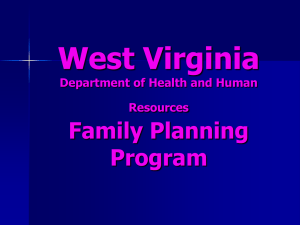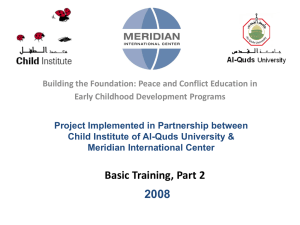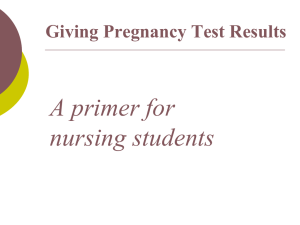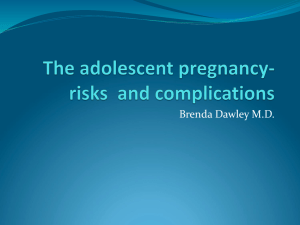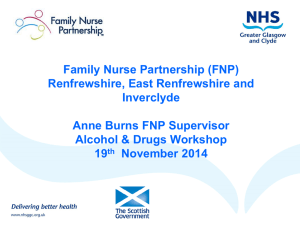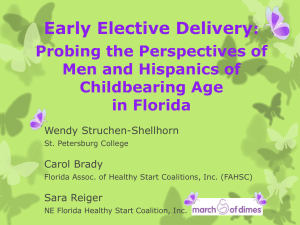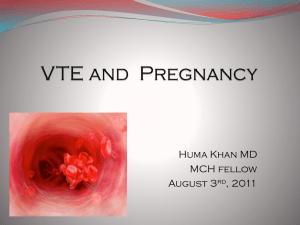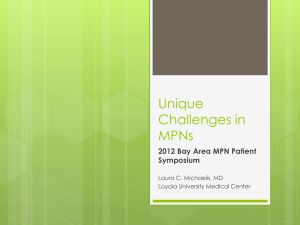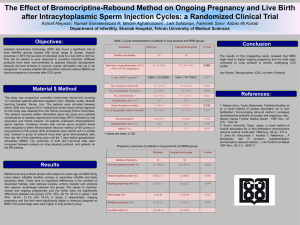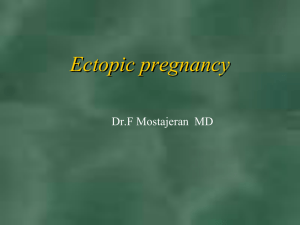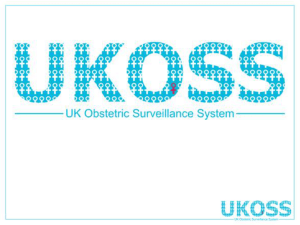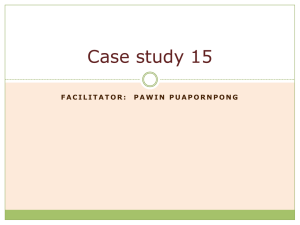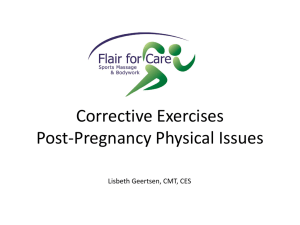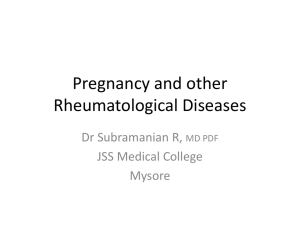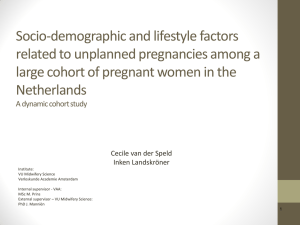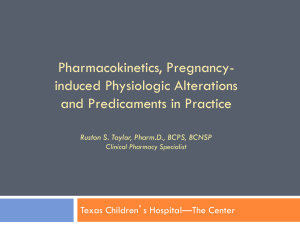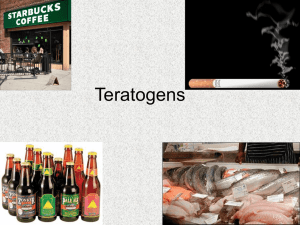full version ( ppt ) - Institute for Fiscal Studies
advertisement
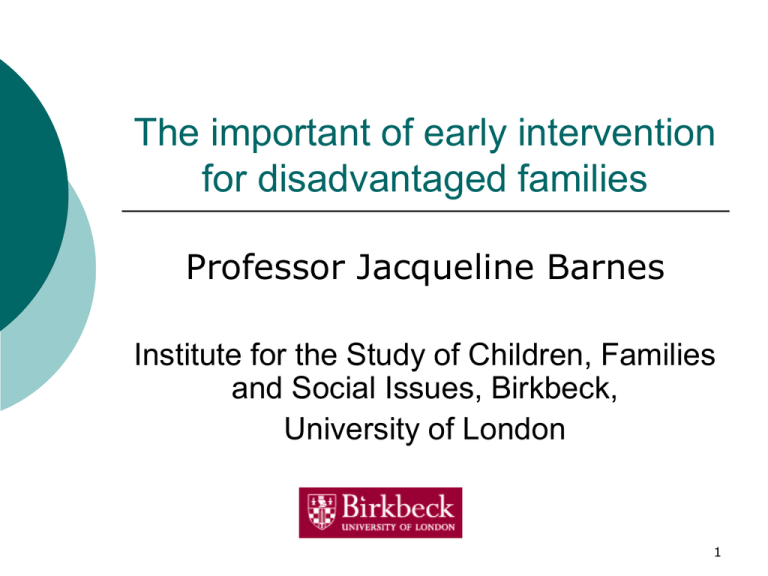
The important of early intervention for disadvantaged families Professor Jacqueline Barnes Institute for the Study of Children, Families and Social Issues, Birkbeck, University of London 1 What will be covered Why early intervention/prevention Some USA examples National Evaluation of Sure Start The Family Nurse Partnership programme 2 Risk factors and poor outcomes Wealth of data from life course studies linking adversity in early life to: o Poor literacy o Anti-social and criminal behaviour o Substance abuse o Poor mental and physical health o Adult mortality 3 Need to intervene earlier To divert trajectories related to disadvantage there is a need for: Earlier and better identification of at risk families Earlier and more effective intervention and prevention Ideally one should intervene prior to conception and definitely during pregnancy in order to promote optimal brain development 4 Prevent before problems emerge If people keep falling off a cliff, don’t worry about where you put the ambulance at the bottom. Build a fence at the top and stop them falling off in the first place. Source: Allen & Duncan-Smith, 2010 5 Experiences affect brain development o Conditions in early life affect the differentiation and function of synapses in the brain o The more positive stimuli a baby is given, the more brain cells and synapses it will be able to develop but… o The brain of an abused or neglected child is significantly smaller than the norm, with 20-30 per cent fewer synapses in the limbic system (governs emotion) and the hippocampus (responsible for memory) is also smaller 6 Differences in brain development following severe sensory neglect 7 Rates of return to human capital investment (Heckman 2000) Rate of return to investment in human capital Preschool programs Schooling Job training Preschool 0 School Post-school Age 8 Brain Malleability Spending on Health, Education, Income Support, Social Services and Crime Public Expenditure Intensity of Brain's Development Brain Development – Opportunity and Investment Birth 1 3 10 Age 60 80 9 Early years interventions is effective for disadvantaged populations USA Examples •Perry Preschool Project – structured preschool 3+years •Abecedarian Project – childcare/preschool 0-6 •Early Head Start – childcare/home visit 0-3 10 Perry Preschool Project (Schweinhart and Weikart, 1997) Gains in IQ at school entry Fewer in special education More graduate from high school Fewer on welfare Higher average earnings in young adulthood Fewer arrests as adults 11 Perry preschool project return on investment Program Benefits Versus Cost $100,000 $80,000 Return on the dollar invested $88,433 $60,000 $7.16 $40,000 $20,000 $0 $12,356 Benefit Cost 1992 dollars, 3% annual discount rate 12 Abecedarian Project (Ramey et al., 2000) Intervention group by age 21 showed: Higher cognitive development from 18 months upward Greater social competence in preschool Better school achievement More college attendance Delayed child bearing Better employment Less smoking and drug use 13 Early Head Start (0-3 years) (Love et al, 2003, 2005) At age 3 intervention group had: Improved Cognitive and Language Development More sustained attention Less aggression Improved parent-child interaction Improved home environment (more reading – less spanking) Centre and home > centre > > homebased 14 UK, Sure Start Local Programmes Most disadvantaged neighbourhoods From birth to fourth birthday All families living in the area so nontargeted Locally driven agenda allowing for diversity Enhancement of existing services 15 Some positive impacts by age 3 (Melhuish et al., 2008; 2010) Children in Sure Start areas had more positive social behaviour, more independence, better self regulation. They received more immunisations and had fewer accidental injuries. Parents showed less negative (harsh) parenting In Sure Start areas there were more stimulating home environments. More use of child and family services. 16 Pregnancy- A ‘magic moment’ of opportunity? • Pregnancy and the birth of a child is a ‘magic moment’ of opportunity when parents are uniquely receptive to support • In the UK Universal midwifery and health visiting services are ideally placed to identify children and families at risk • It is possible to identify in pregnancy those children at greatest risk for developmental and behavioural problems 17 Risk factors potentially identifiable in pregnancy, based on UK evidence Low socioeconomic status Maternal school failure Mother ever in care/looked after Young mother Single parent or non involved father Resident in a deprived neighbourhood Marital/parental discord Ethnic minority status Parental criminality Substance abuse and/or other mental health problems Pregnancy unplanned or not happy about pregnancy Mother continues to smoke in pregnancy 18 Nurse-Family Partnership (NFP) programme (Olds, 2006) Manualised Nurse home-visiting Starts early in pregnancy (16 weeks) For first-time mothers Continues until child is two Supported by over 30 years of research from three RCTs Licensed programme with detailed nurse training and fidelity objectives to ensure replication of the original programme 19 Structured curriculum and specified number of visits 1/week first month Every other week through pregnancy 1/week first 6 weeks after delivery Every other week until 21 months Once a month until age 2 Each visit has a range of materials and activities designed to build self-efficacy, change behaviour, promote attachment 20 The visits cover 6 domains Personal health – women’s health practices and mental health Environmental health – adequacy of home and neighbourhood Life course development – women’s future goals Maternal role – skills and knowledge to promote health and development of their child Family and friends – helping to deal with relationship issues and enhance social support Health and human services – linking to other services The relationship between the nurse and the family lies at the heart of the programme 21 Findings consistent across at least 2 of 3 USA trials Improvement in women’s prenatal health Reduction in children’s injuries Fewer subsequent pregnancies Greater interval between births Increase in fathers’ involvement Increase in maternal employment Reduction in receipt of welfare and food stamps (means tested) Improvement in school readiness 22 Mothers (USA) gaining most from the Nurse Family Partnership programme Low income, at about the national poverty level or below Unmarried (or ‘no partner’) Teenage at conception Below average intellectual capacity Mental health problems in pregnancy Low self esteem/sense of mastery in pregnancy Smoker in pregnancy 23 Cumulative Cost Savings: Elmira $30,000 Cumulative dollars per child Cumulative savings $25,000 S O C I A L $20,000 $15,000 R E T U R N $10,000 $5,000 Cumulative Costs $0 0 2 5 10 15 20 25 30 35 40 45 50 55 60 65 Age of child (years) 24 Testing in England (called FNP) Small scale testing 07-10 Large scale testing 08-11 10 wave 1 sites 20 wave 2 Roll out? 2011-19 20 wave 3 20 wave 4 Evaluation 07/08 to 10/11 RCT 2b and wave1 Testing: Programme delivery, training, organisational and service context, workforce, commissioning, eligibility, recruitment pathways, roll out 25 Who receives FNP in England In all sites under 20 and first-time parent In selected sites also clients with ALL THREE of the following: Aged between 20 and 22 at their last menstrual period (LMP) Not currently in employment, education or training (NEET) No educational qualifications higher than 4 A* to C GCSEs 26 Recruitment in wave 1 identified vulnerable population 80% without 5 or more A*-C GCSEs 78% not employed 67% not living with partner 75% below poverty line 24% report physical abuse in past 12 months, 11% during pregnancy 50% BMI < or >recommended range Indicates a simple selection system, predominantly under 20 and first time mother, will identify appropriate group comparable to those in USA trials 27 Why using other criteria can be problematic Relevant data not available in midwifery records (e.g. income, educational qualifications, ever in care, mental health problems) Nurses do not want clients to feel stigmatised BUT it has been suggested by commissioners that FNP should be more targeted. The issue is the topic of ongoing evaluation. 28 Implementation evaluation findings Nurses enjoy the materials and the extended time with clients When offered the majority accept the programme Clients continue to receive the programme up to 24 months with only the predicted level of attrition Delivery of the programme is not quite at the level specified in the ‘dosage’ objective (number of expected visits) but good in coverage of domains 29 Some implications noted for the cycle of disadvantage Many clients reported planning to return to education Closer involvement of fathers with infants Clients more confident as parents, doing activities with children likely to enhance cognitive and social development Health related changes should enhance child health (e.g. smoking – asthma) Mothers and fathers feel less judged and excluded, are thinking about the future with more optimism, gives them an expectation that formal services could be helpful. 30 Full details of the formative evaluation: Year 1 report (pregnancy and post-partum) available at: http://publications.dcsf.gov.uk/eOrderingDownload/DCSF-RW051%20v2.pdf Year 2 report (infancy) available at: http://www.dcsf.gov.uk/pns/DisplayPN.cgi?pn_id=2009_0168 Reports due at the end of 2010 Refining eligibility criteria Delivery through toddlerhood until children are 24 months 31 Conclusions FNP appears to be an important addition to the range of services within the Healthy Child Programme, likely to benefit the most disadvantaged families Further research evidence from the UK trial will show what the impacts are in the context of universal health care provision 32



